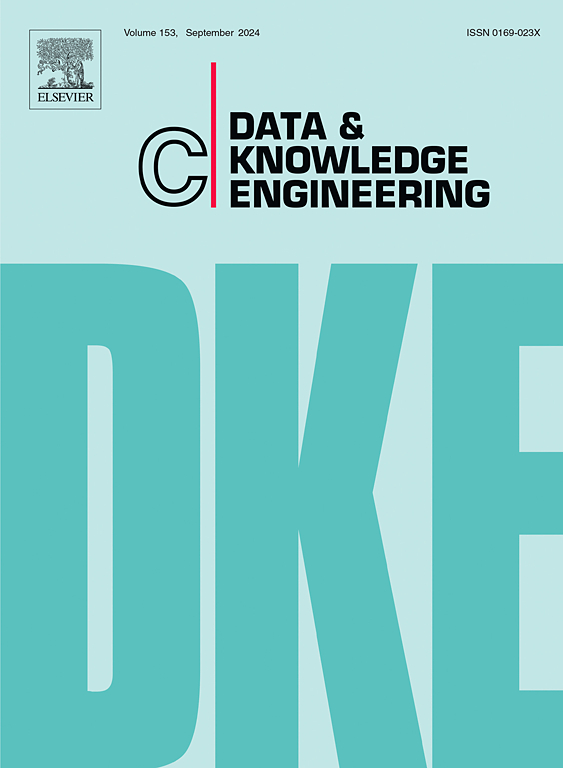CIAGELP:基于聚类启发的增强图嵌入的动态网络链接预测
IF 2.7
3区 计算机科学
Q3 COMPUTER SCIENCE, ARTIFICIAL INTELLIGENCE
引用次数: 0
摘要
长期以来,人们已经探索了许多方法来完成关键而复杂的链路预测任务。其中最有效的方法是从各种图形组件(如节点、边和组)生成嵌入的方法。这些表示旨在将顶点空间投射到低维空间中,确保具有相似上下文的顶点和边缘被紧密表示。尽管基于随机游动的嵌入(RWE)方法已经取得了显著的进步,但它们在动态网络中的性能往往受到限制。为了解决这个问题,我们引入了CIAGELP(基于聚类的增强图嵌入链接预测),这是一种独特的方法,它利用增强图来生成更有希望的路径,从而产生更有效的嵌入。图的增强是通过自定义的成对聚类系数来实现的,该系数不仅捕获了局部结构上下文,而且还强烈影响了节点对之间的连接强度。此外,为了解决以前的RWE方法在动态网络上的缺点,例如精度低和计算成本高,我们的方法采用了一种增强的RWE机制,该机制只考虑后续快照之间的差分图,并以低成本高效地生成嵌入。通过与不同的机器学习方法、各种增强比和基于随机游走嵌入的最先进方法的综合比较,我们证明了CIAGELP方法的优越性。通过利用具有聚类相似性的增广图,并考虑动态网络中嵌入生成的差分网络动态,我们的方法大大优于以前的随机漫步方法。本文章由计算机程序翻译,如有差异,请以英文原文为准。
CIAGELP: Clustering Inspired Augmented Graph Embedding based Link Prediction in dynamic networks
For a long time, numerous methods have been explored for the crucial and intricate task of link prediction. Among the most effective approaches are those that involve generating embeddings from various graph components such as nodes, edges, and groups. These representations aim to project the vertex space into a lower-dimensional space, ensuring that vertices and edges with similar contexts are represented closely. While random walk-based embedding (RWE) methods have shown significant improvements, their performance tends to be limited for dynamic networks. To address this, we have introduced CIAGELP (Clustering Inspired Augmented Graph Embedding-based Link Prediction), a distinctive approach that utilizes an augmented graph to generate more promising paths and consequently efficient embeddings. The augmentation of the graph is achieved through a customized pairwise clustering coefficient, which not only captures the local structural context but also strongly influences the strength of connections between pairs of nodes. Additionally, to address the drawbacks of previous RWE approaches on dynamic networks, such as inferior accuracy and high computational cost, our approach employs an enhanced RWE mechanism that considers only the differential graph among subsequent snapshots and generates embeddings efficiently at a low cost. Through comprehensive comparisons with different machine learning methods, various augmentation ratios, and state-of-the-art methods based on random walk embeddings, we demonstrate the superiority of our CIAGELP approach. By leveraging augmented graphs with cluster similarity and considering differential network dynamics for embedding generation in dynamic networks, our approach substantially outperforms previous random walk methods.
求助全文
通过发布文献求助,成功后即可免费获取论文全文。
去求助
来源期刊

Data & Knowledge Engineering
工程技术-计算机:人工智能
CiteScore
5.00
自引率
0.00%
发文量
66
审稿时长
6 months
期刊介绍:
Data & Knowledge Engineering (DKE) stimulates the exchange of ideas and interaction between these two related fields of interest. DKE reaches a world-wide audience of researchers, designers, managers and users. The major aim of the journal is to identify, investigate and analyze the underlying principles in the design and effective use of these systems.
 求助内容:
求助内容: 应助结果提醒方式:
应助结果提醒方式:


